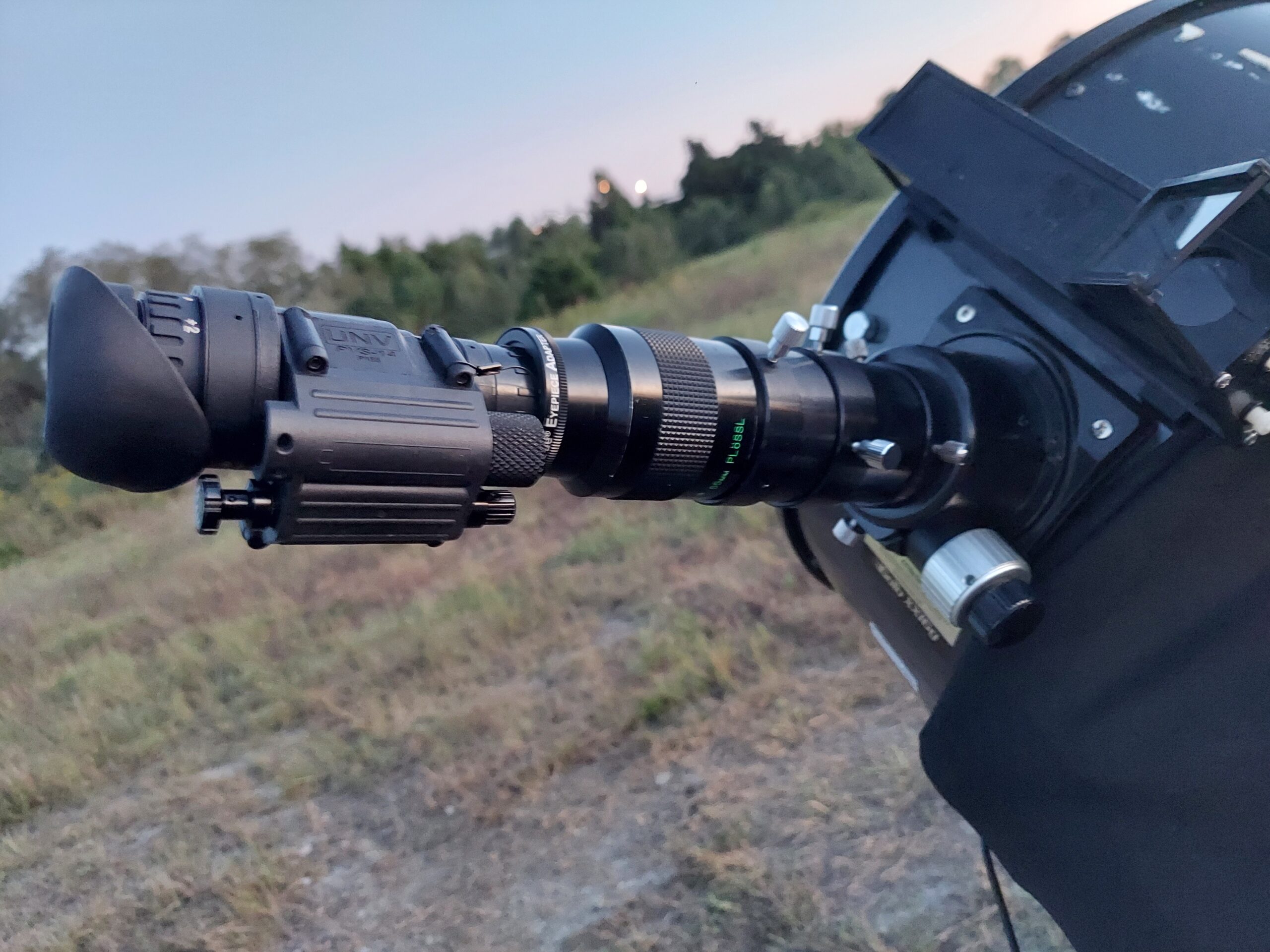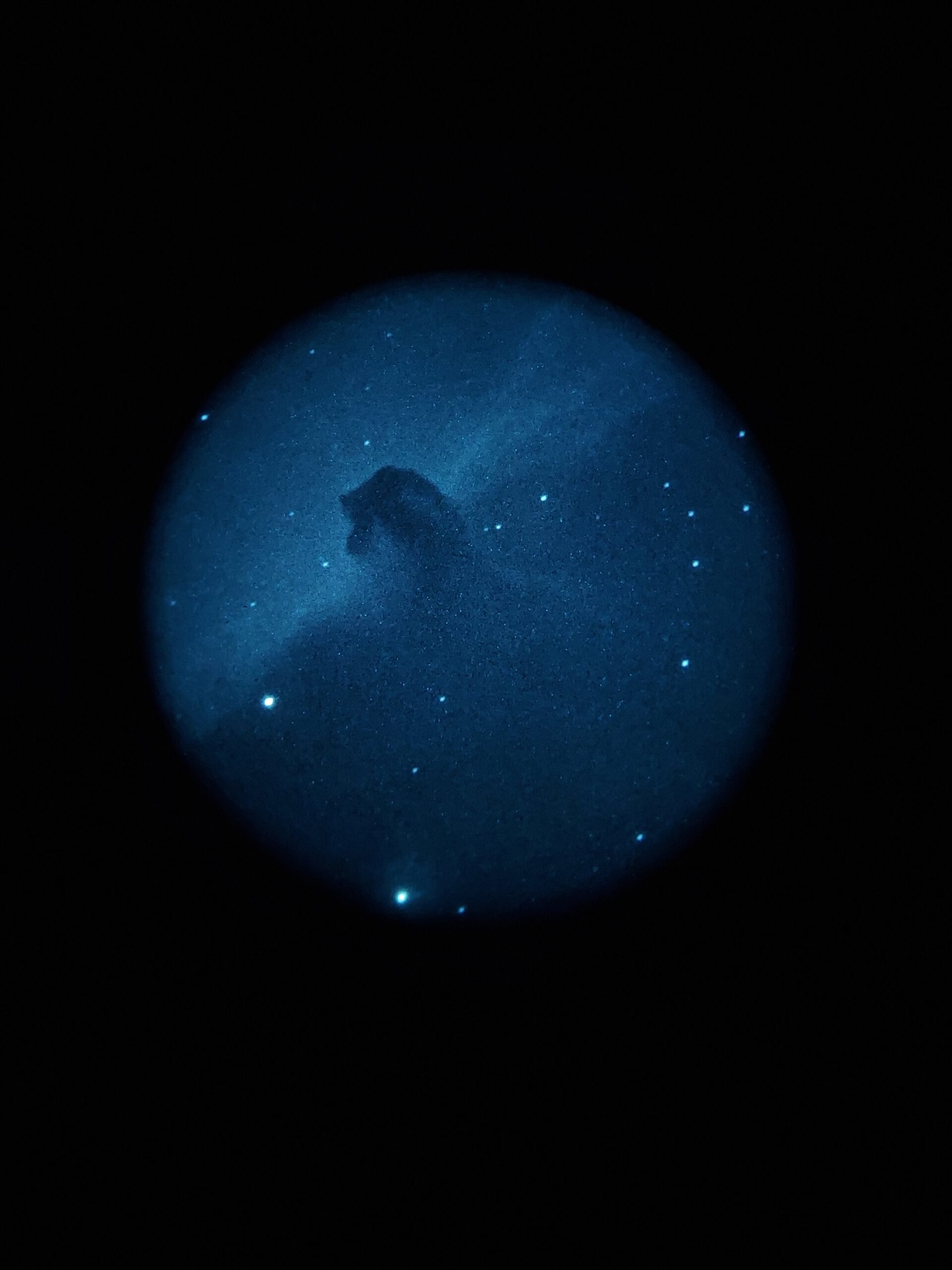A
Aperture
The light gathering power of a camera or telescope. Aperture is measured as the distance across the primary mirror or lens in a camera, telescope or other optical instrument.
Asterism
Groupings of stars smaller than constellations but significant as a group. Asterisms often contain pointer stars used to locate constellations or other stars. The Big Dipper is an asterism.
Arc-seconds
Astigmatism
In astronomy astigmatism is an optical aberration or inaccuracy. Astigmatism is an aberration of magnification and focus. In astigmatism the light is not reflecting or refracting in perfect straight lines, but creating two focal points in the optical path of the light. Astigmatism looks a lot like coma in a telescope.
Astronomical
AstroSpheric
A weather app used by many astronomers to determine cloud cover, dew point and other seeing conditions.
Atmospheric
Aperture
In astronomy, aperture is defined by the diameter of the objective lens or primary mirror and plays a large role in resolution and image brightness. In optics, aperture refers to the hole or opening through which light enters the optical system. Taken in conjunction with the system’s focal length, the aperture determines the angle of the light cone which forms the focused image.
In photography, aperture is given as the ratio of the lens’s focal length to its aperture stop. This ratio is called the f-stop and can be changed by opening and closing a diaphragm behind the lens, which affects depth of field and exposure.
Asteroid (Minor Planet)
Astronomical Unit
Astrophotography
Averted Vision
Atmospheric Dispersion
Apparent Field of View
Airy Disk
Alt-Azimuth
Alt-Azimuth refers to the right to left and up and down movement of a telescope mount. These mounts closely mimic, but do not replicate the arced movement of the celestial bodies making them preferred for visual observing rather than astrophotography. Dobsonian Mounts are the most popular Alt-Azimuth mount in astronomy.
Azmuth
Angular Size
Angular Distance
B
Barlow
Binary
Black Hole
Big Dipper
Blue Moon
Baily’s Beads
Barlow Lens
Black Hole
Blue Moon
Bahtinov Mask
Broadband filter
Back Focus
Bortle
Bird Jones
C
Chromatic Aberration
Circumpolar
Clearing Backlash
Collimation
Coma
Comet
Conjunction
Constellation
Culmination
Clearing Backlash
Celestial Coordinates
Chichen Itza
Chichen Itza is a Myan city ruin found in Mexico. Chichen Itza is incredibly well solar aligned. Visiting Chichen Itza today you can witness the railings of El Castillo light up on the Equinox, or see the remains of El Caracol, a domed observatory aligned with the movement of Venus.
Circumpolar
Collimation
Comet
Compound Telescope
Conjunction
Constellation
Culmination
Camera Rotator
Chromatic Aberration
Culmination
Collimation
Conjunction
In Astronomy a conjunction is when we see two planets or stars very close together from our point of view on Earth.
Circumpolar
Cable Management
Crayford Focuser
Cheshire Eyepiece
Caldwell Objects
D
Dobsonian Mount
Invented by John Dobson, the Dobsonian mount is an Alt-Azimuth mount designed to be low cost and easy to manufacture. Dobsonian Mounts generally support large reflector telescopes, but can be used with any optical tube assembly.
Dark Adaptation
Declination (Dec.)
Dobsonian (“Dob”)
Double Star (Binary Star)
Dew Control
Delos
DeLite
Diffraction limited
Dobsonian
Dew Heater
Dual Speed Focuser
Dew Prevention
DSLR
Dew Shield
Dew Prevention
Dew Point
Dusk
E
El Castillo
A Mesoamerican step-pyramid that is significantly aligned with solar events. El Castillo has 4 sides with 91 steps on each, this totals 364 step, plus the platform on top totaling the 365 days in the solar year.
Equinox
Equinox is latin for “Equal Night” and it refers to the time of year when the position of the sun is in line with the celestial equator and marks the changing of the seasons. It is widely believed that the Equinox results in exactly equal day and night, although this is not entirely true. The day and night are a few minutes different even on the equinox.
Equatorial Mount
Eyepiece
Earthshine
Eccentricity
Eclipse
An eclipse is an astronomical event in which an object is partially or completely obscured by another body. Eclipses occur either when an object moves between our line of sight and another object, or when an object moves into another object’s shadow.
Though we usually only refer to eclipses in the context of the sun and moon (solar and lunar eclipses), planets, stars, and even spacecraft can also be eclipsed.
When an object is partially obscured, this is called a transit. When completely obscured, it is called an occultation. In common usage, transits and occultations are usually treated as separate events from eclipses.
Ecliptic
Elongation
Ephemeris
Eyepiece
Exit Pupil
Eye Relief
Ethos
Exposure
F
Field of View
Field Stop
Finderscope
Focal Length
Focal Ratio (f/number)
Flattener
Filter
Focal Plane
Focal Length
Feather Touch Focuser
Focal Reducer
Frames
G
Galaxy
Galaxies are large agglomerations of matter surrounded by mostly empty space.
While they consist mainly of stars bound together by mutual gravitational attraction, galaxies also contain other material such as gas, dust, planets, dark matter, and perhaps intelligent life.
Gobekli Tepe
Means Pot Belly Hill
Gibbous
Go To
Guide Scope
H
Histogram
H-beta filter
Heliocentric
Referring to the sun as the center of the universe or as a constant for astronomical measurement. The Heliocentric model of the universe is the currently accepted model of the universe.
I
International Astronomical Union
Inclination
Isaac Newton
ISS
J
K
Kellner
L
Libration
Light Pollution
Light-year
Limb
Light Pollution
Laser Collimator
M
Magnification (power)
Magnitude
Mak (Muskatov)
Meridian
Messier object
Meteor
Meteor Shower
Milky Way
Mount
Meridian Flip
Monocentric
Mirror Coating
MAK (Muskatov)
Messier Objects
Messier Marathon
N
Nebula
Nagler Type 1, 2, 4, 5, 6
Nadir
Narrowband filter
Nebulosity
NGC Objects
O
Objective
Occultation
OIII filter
Opposition
Orthoscopic
Optical Tube Assembly (OTA)
OTA stands for Optical Tube Assembly and it refers to the tube of a telescope that contains the optical components like lenses or mirrors. In Astronomy the path the light takes is called the optical train. Both reflector and refractor telescopes have an OTA.
Optical Tube
P
Paracorr
A paracorr is a highly adjustable coma corrector manufactured by Tele Vue Optics. This telescope accessory corrects the elongation of stars in the field of view, also known as a coma corrector.
Parallax
Phase
Planisphere (Star Wheel)
Pointer Star
A star, usually in an asterism, that can be used to locate other stars or groups of stars. The Big Dipper is filled with pointer stars that help observers locate Polaris, Leo and Ursa Major.
Plossl
Power Tank
Planetary Nebula
Push To
Planetary Camera
Parfocal
Prime Focus
Parfocalizing Rings
Parfocalizing Eyepiece
Q
Quasar
Quadrant
R
Reflector
Refractor
Retrograde
Right Ascension (R.A.)
RACI
Reducer
Red Dot Finder
Reticle
Radian
Radius of curvature
Relate solving
Resolving Power
S
Seeing
Sextant
Sidereal Time
Solar Filter
Solstice
Star
Star Cluster
Star Diagonal
Star Party
Sunspot
Supernova
Spherical Aberration
Spider
Space telescope
Surface Detail
Stacking
SCT (Schmidt Cassegrain Telescope)
Seeing
T
Terminator
Transit
Transparency
Truss Tube
Twilight
Twilight describes illumination from the scattered light of the sun when it is just below the horizon, as well as the period when such illumination occurs. Twilight occurs both before sunrise and after sunset. There are exact geometric definitions of morning and evening twilight, as well as three distinct sub-categories: civil, nautical, and astronomical twilight.
Telrad
Tangent Z Correction
True Field of View
Transparency
Tabletop Dobsonian
TAK (Takashi)
Truss Tube
Telescope Aperture
Transparency
Transit
U
Unit-Power Finder
Universal Time (UT)
V
Variable Star
Vignetting
Virtual Image
Visual Observing
Vixen
W
Waning
Waxing
X
Y
Z
Zenith
Zenith is an imaginary point on the celestial sphere located directly above an observer. In common usage it is sometimes used to describe the highest point reached by an object such as the sun (culmination). In scientific terms, the zenith is specific to an observer’s location. The direction of the zenith is vertically opposite the direction of gravity, the nadir, and is perpendicular to the horizon.



